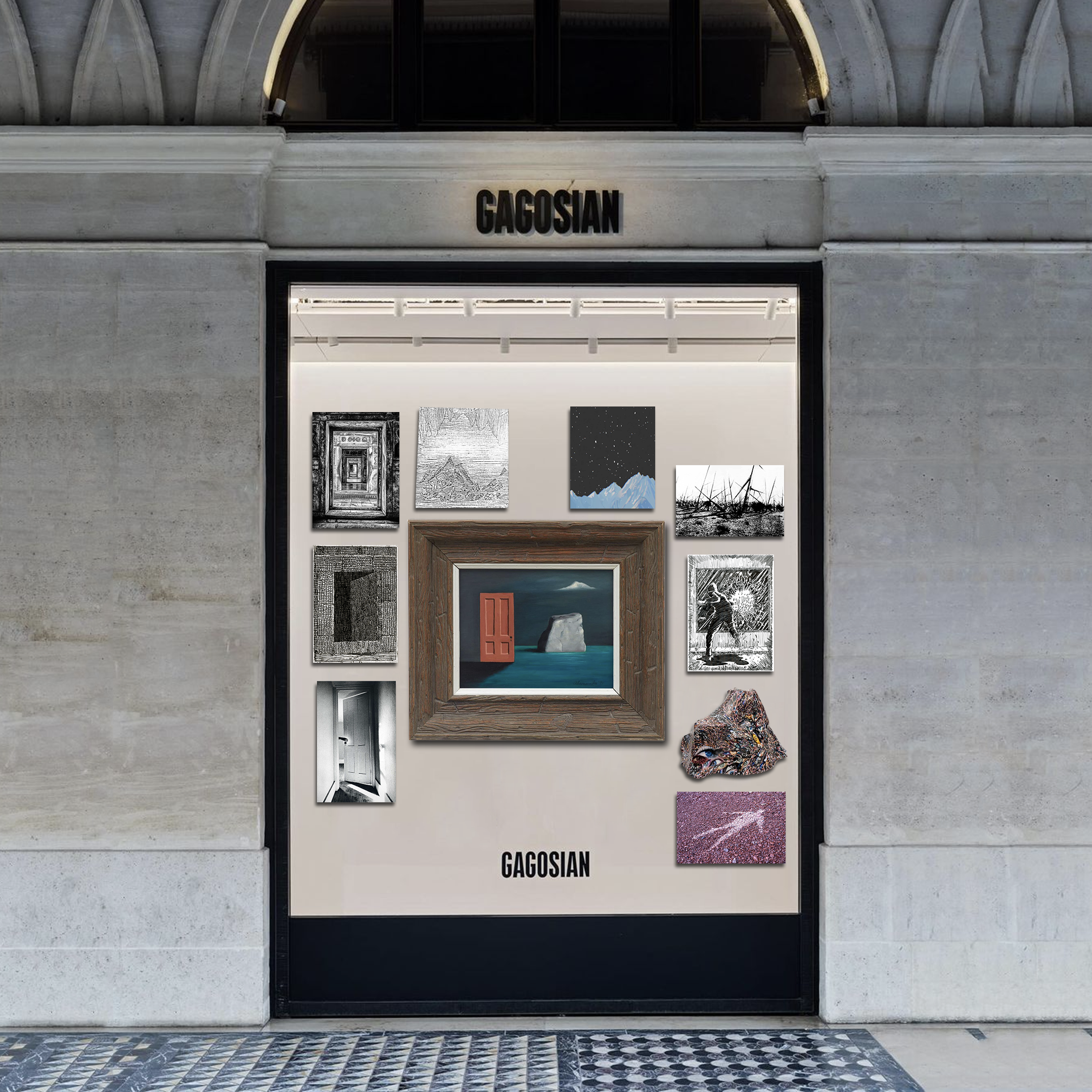Gertrude Abercrombie, The Door and the Rock (and the Mountain) "appendage/accompaniment"

 appendage.png)
Painted near the end of her life, Gertrude Abercrombie’s The Door and The Rock (1971) synthesizes two of the artist’s signature motifs into a surreal composition reminiscent of one of her creative heroes, René Magritte. On the left side, a large white rock, illuminated as if by a full moon, emerges out of a placid, turquoise sea and rises up against a grey-blue night sky. On the right, a brick- orange door appears suddenly, disrupting the horizon line and any semblance of pictorial realism. According to Abercrombie expert Dr. Susan Weininger, the rock, which appears in many of her paintings, symbolizes her ancestral home in Aledo, Illinois. The door first appeared in Untitled (Room, Woman’s Profile and Door) (c. 1940), now in the collection of the Illinois State Museum. Always lacking hinges, it represents the foreclosure of a possible passageway out of her own mind as well as a fortified defense in service of self-protection. The Door and The Rock thus suggests the protection of childhood memories from any psychic intrusion. The Door and the Rock, 1971 ,
Oil on masonite, 7½ x 9½ in. (20.3 x 25.4 cm)
13⅝ x 15⅝ x 1¾ in. (34.62 x 39.70 x 4.45 cm) framed
Working with a similar symbolic/thematic palette,
Phillips' appendage/accompaniment contains:
'view of a mountain sanctuary' Paul Klee xerox
William Blake "Death's Door" 1793 (NTP edit)
hand shadow through doorway (somnambulist) 'Unknown Pleasures' interior
a multiplicity of (recursive) doors
Blue Winter Mountains / Black Starry Sky
This Place is Not A Place of Honor, Yucca Mountain Long-term Nuclear Radiation Warning
rain shadow silhouette, on warm red rock gravel
eye rock sculpture
breaking window with rock black bloc drawing